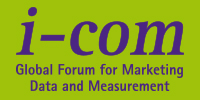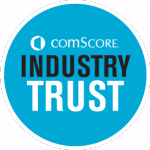How Good is Your Data?
by on 7th May 2015 in News

Data is fuelling the marketing industry’s shift from labour-intensive manual booking to more dynamic automated processes (in theory at least), but the success of this transition relies on the quality of the data at its disposal. ExchangeWire garners insights from last week’s big data conference I-COM, as well as recent industry debates to assess the market’s attitude towards this trend.
Digital marketing, and the ad tech sector in particular, has become renowned for buzz phrases since its very inception, and ‘big data’ has stood out as arguably the ‘phrase du jour’ in recent years, with every media outfit looking to put together teams of ‘data scientists’ to keep apace with the change.
However, as the industry evolves, conversations are moving along from simply exchanging these words over a negotiating table – whenever the widespread understanding of these terms is debatable – to more sophisticated debates.
In a recent interview Scott Brinker, ChiefMartec.com, founder and editor-in-chief, advised ExchangeWire readers to: ‘For marketers, the most important thing is to follow the data.’
He added: “Anyone who tells you they know exactly how this space is going to evolve is likely delusional, or trying to sell you something.”
He went on to say: “The best technology strategy for marketers is to design for change. The most important aspect of that is understanding what your core data assets are and what access you — or others — have to them.”
How widespread is understanding of the data economy?
 Hence, it’s clear that a vital preliminary step to prepare for the the collision of ad tech and martech, where (as referenced by Brinker) the ability to harness and make sense of vast swathes of data is not only desirable but a key competency, reaching a consensus on the various iterations of the term ‘data’ is much needed.
Hence, it’s clear that a vital preliminary step to prepare for the the collision of ad tech and martech, where (as referenced by Brinker) the ability to harness and make sense of vast swathes of data is not only desirable but a key competency, reaching a consensus on the various iterations of the term ‘data’ is much needed.
Events such as last week’s I-COM Global Summit hosted in San Sebastian – where hundreds of delegates from both the enterprise data and media services industry sectors were in attendance – descended upon the conference venue to debate: ‘turning big data into the right data [or smart data]’ in order to deliver value to a wider organisation, prove a good opportunity to do so.
The currency of data
 Most in the digital industry will agree that data is ultimately the main source of evidence for businesses to plot (and then reassess) their strategies towards forging relationships with audiences, and increasingly it is the currency used by both media-buyers and media-owners when trading advertising slots in an automated fashion.
Most in the digital industry will agree that data is ultimately the main source of evidence for businesses to plot (and then reassess) their strategies towards forging relationships with audiences, and increasingly it is the currency used by both media-buyers and media-owners when trading advertising slots in an automated fashion.
To help further understanding of the terminology used in the ‘big data’ era, ExchangeWire caught up with some of the standout speakers from last week’s I-COM event. Andy Fisher, Merkle, chief analytics officer, and I-COM, explained the growing importance of data (and how it is impacting most media plans) means that advertisers will increasingly have to leverage insights within their customer relations management system(s). The growing prominence of this has been reflected in the last year, according to Fisher.
He added: “There has been a giant change in leveraging first-party data for targeting in the last year, the chief change is that the CRM and media [planners] are starting to merge.
Saqib Mausoof, Magna Global, SVP, and I-COM panellist (pictured below, right), added: “We have done CRM online before, but two of the main things to have changed in recent years are that it used to be very expensive, but now the price has come down quite a bit, that makes it really effective for media companies to take in CRM segments, such as an email or postal address [and apply them to a media plan].
 “Plus, now with effective attribution strategy you can effectively balance-out a media plan. For instance, in the past you would have search or retargeting taking credit for a promotion campaign (which may have relied on CRM data), and the that credit the first-party CRM data deserves can get lost in all the media thrown at the consumer.”
“Plus, now with effective attribution strategy you can effectively balance-out a media plan. For instance, in the past you would have search or retargeting taking credit for a promotion campaign (which may have relied on CRM data), and the that credit the first-party CRM data deserves can get lost in all the media thrown at the consumer.”
Identified first-party data & unidentified first-party data
Fisher also took the time to delineate between different types of first-party data – which is widely-regarded as the holy grail of data.
He added: “The industry has not worked out a good terminology. In my mind, there are two types of first-party data: identified first-party data; and non-identified first-party data. Identified first-party data: this is the data where a brand knows that ‘customer X’ is an account holder with its company. Here you know where to target a user, and with what kind of a message.
“Then there is unidentified first-party data: this is where a brand knows that a user has been to its website, but maybe has not converted, and that’s the type of user you want to retarget.”
The growing importance of first-party data on brands’ online media planning over the past 12 months has been underlined with instances such as the launch of Facebook Custom Audience, or Twitter Tailored Audiences.
Data within the walled gardens
However, as pointed out in countless pieces by ExchangeWire, not all data is created equal, and attitudes over the data held by platform providers (or media owners) such as Facebook, Google, and Twitter is massively divisive, but what cannot be argued is that as consumers’ media consumption fragments across screens, their cross-screen insights are increasingly useful.
 Fisher (pictured left) explained further: “Another big change in the last year or so, is that you are no longer talking about targeting on desktop using the cookie. Now you are looking at using a Facebook ID to manage users across devices. For instance, if you’re a bank, and you have information on 12 million customers, and you want to cross-sell three million of those a product, you can target those particular platforms.
Fisher (pictured left) explained further: “Another big change in the last year or so, is that you are no longer talking about targeting on desktop using the cookie. Now you are looking at using a Facebook ID to manage users across devices. For instance, if you’re a bank, and you have information on 12 million customers, and you want to cross-sell three million of those a product, you can target those particular platforms.
"This does work well, but usually only within the walled gardens at present of the likes of Facebook and Twitter. The real challenge is to cross-target them, but the fact is it’s much more straightforward to target them within the individual walled gardens.”
Armel Bursaux, Starcom MediaVest, data analytics director, and fellow I-COM panellist, explained his attitude towards the debate: “To me, first-party data is the data that the advertiser owns. What you have to ask is, is Twitter and Facebook data the kind of thing that an advertiser can actually own? Also, you have to ask yourself, is there a way to use that safely, and can you trust what Facebook [etc] provides you with, in terms of performance, and targeting assurity?”
Magna Global’s Mausoof added: “We have to ask ourselves, are we talking about first-party data when we talk about things like Custom Audiences, etc, where you are effectively captive?”
Below is a video of a debate on the merits of first-party data contained within 'walled gardens' – or ‘closed’ ecosystems – and third-party data – typically available in more 'open' environments – between a representative of Google (seated second from right) and Tapad (seated far right). Footage courtesy of Magnetic.
Third-party data?
Away from the debate over data contained within the digital media industry’s walled gardens, all three sources were in agreement that first-party data bases need to be “cleansed” – or kept up to date – a process that Fisher said was becoming less labour-intensive compared to earlier days, predominantly through the growing use of data management platforms (DMPs).
However, Starcom Mediavest’s Bursaux was eager to highlight the role that third-party data – i.e. data sets generated that are often aggregated across multiple properties by third-party companies and then sold to brands for marketing purposes – can play within a media plan.
 Third-party data should be blended with first-party data where appropriate, but care must be taken to ensure that bought third-party data is as relevant, fresh and actionable as possible, according to Bursaux (pictured right).
Third-party data should be blended with first-party data where appropriate, but care must be taken to ensure that bought third-party data is as relevant, fresh and actionable as possible, according to Bursaux (pictured right).
He added: “It’s a lie to say that any advertiser can use their first-party data; you always have to work on refining the quality of your first-party data. You need a minimum of 3-4 million unique visitors a month [to your brand’s website] to be assured of this. Otherwise, you would be better off going for a third-party partnership, which can be just as good as well.
“So, first you need the numbers, then you need to be able to segment the audience [in terms of the user journey there] the proper way, to be able to make sure you have good, actionable data.”
Trusted data
All three parties were in agreement that what was necessary when pairing with third parties for data was the importance of partnering with a trusted entity and, as referenced above, if data is increasingly the currency between media buyer and owners, then ensuring trust is imperative for the industry to progress.
 This requirement has been identified by industry measurement firm comScore, which also used last week’s I-COM event to support its launch of its Industry Trust Initiative.
This requirement has been identified by industry measurement firm comScore, which also used last week’s I-COM event to support its launch of its Industry Trust Initiative.
This involves comScore measuring the quality of traffic – for metrics such as viewability, etc – available in programmatic environments (such as ad exchanges) using a set of independently-verified metrics.
The measurement firm’s publisher clients can then access their Trust Profiles – a collection of key advertising metrics including: audience and category ranking data, viewability ratings, plus non-human traffic (NHT) ratings – which then gives them insight as to how their inventory will be represented in programmatic trading platforms.
Paul Goode, comScore, VP, Europe, told ExchangeWire: “There is still a fair amount of work for the industry to do, but getting data such as this into real-time media trading environments is imperative.”
He went on to state that many media owners and buyers complain that applying data metrics such as the above “doesn’t produce the same results” in terms of positive campaign feedback, or when it comes to allocating budget on a media plan; but this is purely the result of previously flawed methods of campaign assessment, he maintained.
“Another thing that is important for advertisers to look at is moving away from metrics such as brand viewability; they need to become more data-literate, and connect programmatic campaigns to brand metrics, such as uplift, etc,” added Goode.
If publishers hope to open new revenue streams via audience extension – often by selling their audience data, which advertisers can then use to reach audiences they previously had sight of via DMPs – then building such trust is necessary.
Data not important as insights
A research study conducted by ExchangeWire last year demonstrated that almost half (49%) of respondents will play a “very important” role, with 30% claiming it would be “important”. The remaining 20% were less positive about how important a role data will play in their media trading strategies, with 2% claiming it was “not important”.
 Rebecca Muir, ExchangeWire, head of research and analysis (pictured right), says: “Recent studies have shown that people [professionals] care about the insights that data can bring. For instance, with personalising ads, this requires data, but that data also needs to be correctly interpreted. If that’s not done correctly, it is often ranked as one of the things that most annoys consumers.”
Rebecca Muir, ExchangeWire, head of research and analysis (pictured right), says: “Recent studies have shown that people [professionals] care about the insights that data can bring. For instance, with personalising ads, this requires data, but that data also needs to be correctly interpreted. If that’s not done correctly, it is often ranked as one of the things that most annoys consumers.”
Ciaran O'Kane, ExchangeWire, CEO, and I-COM attendee, summed up his assessment of the situation as follows: "What we are seeing now with the the analytics divisions of most marketing organisations, is a recognition of the programmatic opportunity.
"The possibility to leverage first and third party data for granular cross-channel targeting is now moving beyond the confines of specialists at the cutting edge of media trading - and you can expect more broader discussion at specialist conferences like I-COM over the coming 12-24 months."
AdvertiserAgencyAnalyticsBrandingDataDigital MarketingDisplayDMPDSPEMEAExchangeExchangeWire ResearchFacebookGoogleMartechMeasurementMedia SpendProgrammaticTargetingTradingTrading DeskViewability








Follow ExchangeWire